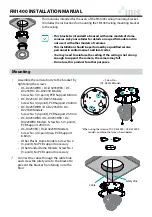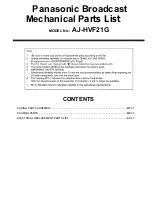
LIR18650R-25
•
Li-ion cylindrical rechargeable battery
4. Appearance
There shall not be such defect as deep scrath, pits, creck, rust, leakage, which may adversely affect commercial
performance of the cell.
5. Technical characteristics
5.1 Cell testing conditions
Unless otherwise specified, all tests stated according to following: Temperature: 25±2.5ºC.
5.2 Requirement of the testing equipment
Voltage meter:
The voltage tester internal resistance is ≥ 10 KΩ/V.
Temperature meter:
The precision is ≤0.5ºC.
5.3 Electronic performance
Standardcharge
This “Standard charge” means charging the cell with constant current 0.5C and then withconstant voltage 4.2V,
0.02C cut-off at 25±3ºC.
Standard discharge capacity
The standard discharge capacity is the initial discharge capacity of the cell, which ismeasured with discharge
current of 0.2C with 2.5V cut-off at 25±3ºC after the standardcharge.
Standard rated discharge capacity
The standard discharge capacity is the initial discharge capacity of the cell, which ismeasured with discharge
current of 10A with 2.5V cut-off at 25±3ºC after the standard charge.
Temperature dependence of discharge capacity
Capacity comparison at each temperature, measured with
discharge constant current 10A and 2.5V cut-off after the
standard charge is as follows.
Note:
If charge temperature and discharge temperature is not the same, the interval for temperature change is
three (3) hours. Percentage as an index of the capacity at 25ºC is 100%.
Discharge rate capabilities
Discharge capacity is measured with the various currents in under table and 2.5V cut-off after the standard charge.
Discharge condition
Current
0.5A
5A
10A
15A
20A
Relative capacity
100%
≥95%
≥95%
≥95%
≥95%
Cycle life
Each cycle is an interval between the charge (charge current 0.5C) at 25±3ºC, rest 10 minutes, and discharge
(discharge current 20A) with 2.5V cut-off, then rest 45 minutes.
After 300 cycles, Capacity Retention = Cap (300th)/Cap (Av10)≥80%.
Storage characteristics
Storage for 30 days at 25±3ºC from the standard charge, measured with discharge constant current 10A with
2.5V cut-off at 25ºC.
Capacity retention (after the storage) ≥90%.
Discharge temperature
-10ºC
0ºC
25ºC
60ºC
≥60%
≥80%
100%
≥95%



























